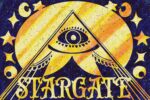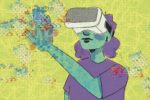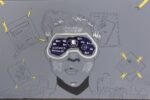“Dune” is a shining assemblage of science fiction elements. Based on Frank Herbert’s novel, the recent movie follows Paul, the son of Jessica and Duke Leto of Atreides. Since he is the son of a loved duke, Paul is surrounded by mentors who teach him many things. However, when the Emperor begins to fear how well-liked and influential Duke Leto is, he gives the duke another planet, Arrakis. All the Atreides know the dangers of Arrakis and travel to the desert planet on high alert with the goal of securing their future. However, securing alliances in a galaxy is never that easy. It seems that all of the galaxy is working against them. The Harkonnens, who first ruled the planet, wish to control the land once again. Although there seems to be no oasis in the sand, spice swirls on the sandy surface. The most valuable resource in the galaxy, the hallucinogenic spice is used by the Spacing Guild to see the future and maintain their monopoly on interstellar travel and banking.
Topos
The best science fiction stories have an extensive topos, or setting. From the landscape to the society or organizational structure, the quality of the topos largely contributes to the quality of the tale. If the topos is immersive, the story will follow.
Herbert thought through every aspect of the galaxy’s social structure and cultural nuances. Originally from Caladan, the Atreides value loyalty and respect for each other. They prize life above everything else. In contrast, the Harkonnens are a brutal race that only wants to retake Arrakis for the wealth it brings. The Fremen are the native people of Arrakis and they have adapted to the environment.
A more obscure group is the Bene Gesserit, a coven of women with mind-control powers and the ability to see into the future. They are a manipulative group as they attempt to assure their survival and secure the “best course” for the galaxy. Each group of people has a rich culture with its own customs and rituals, which the novel explains in detail — a depth that the movie only touches upon. Yet, every quality sci-fi story depicts a comprehensive world of colorful cultures.
Similarly, both planets Caladan and Arrakis are depicted in great detail. Waves crash against the black rocky shore of Caladan, which fades into luscious green grass. During a conversation between Paul and his father, tombstones lay in neat rows in the background, further displaying the Atreides’ emphasis on respect, this time for the dead. Arrakis is a desert planet, introduced by wind gusting in the characters’ faces. However, there is a uniqueness, a value in the desert. Spice — the most valuable resource in the galaxy — can only be harvested from the sands of Arrakis. The landscape and the setting are steadily fleshed out as Paul continues his journey.
The novel slowly builds the topos, both the planets and the people. Herbert does this in a natural manner: As Paul learns about Arrakis, so does the reader. He fluently describes the dunes of the desert and the people Paul encounters. Mirroring Herbert’s style, the film effectively places the viewer in Paul’s galaxy.
Advanced Technology
One of the most familiar concepts in sci-fi is advanced machinery. Futuristic but realistic technology essentially defines the genre; science fiction is a type of fantasy that relies on realism and invites the audience to imagine the possibilities.
“Dune” includes a multitude of futuristic technology. Shields are a seemingly omnipresent part of the galaxy, projecting over and protecting the body or a ship from speeding projectiles. Of course, the ships reflect massive technological advancement. They allow easy travel between planets and even the intra-planetary ones look different. Named ornithopter, the swift ships look like dragonflies.
Within the first few minutes of the film, Paul comes across the gom jabbar. As the Reverend Mother of the Bene Gesserit tells him, the box holds pain. As Paul places his hand into the box, he experiences an unimaginable amount of suffering, but when he removes his hand, it is unharmed — not even a scratch.
Countless other sci-fi works include cyborgs, but “Dune” was one of the first to do so: People in Herbert’s creation are artificially enhanced. Mentats are human computers meant to solve problems and process probabilities. Both the Atreides and Harkonnens use mentats since they are knowledgeable and calculating.
Unique to Arrakis, the Fremen developed stillsuits to combat the heat of the desert. They cover the body with a mask that covers the mouth and nose. They function to preserve as much moisture as possible — if they are worn correctly, they will not lose more than a thimble of sweat throughout a day on the desert sand.
Utopian and Dystopian Elements
While each science fiction society has utopian components, they especially portray dystopian foundations where people tend to live uneasy lives under an oppressive group. In dystopias, the protagonist tends to feel alienated, but finds some hope. Most science fiction stories are dystopian themselves, but all include these themes.
While it may be easy to categorize the brutal Harkonans as strictly dystopian, every culture has both utopian and dystopian elements. The Fremen, for example, are completely attuned to their environment and have developed a close-knit community. However, they have their own brutal rituals. When one member challenges the other, for example, they participate in a fight to the death.
The elements are also present when categorizing planets. Caladan is portrayed as a paradise: white-capped waves rolling against the shore and vibrant waves of grass. Arrakis sits in contrast with this bliss. Heat rolls off the dunes and the sunlight is enough to kill a man in hours. However, the Fremen have developed ways to seize natural resources other than the spice that others crave and aim to create a type of utopia for themselves.
Paul is a remarkable example of an alienated protagonist. In addition to being trained in the ways of leadership, his mother trained him in the ways of the Bene Gesserit. Paul is something different than anyone else — a combination of different ways of life, including both his heritage and the customs he adopts.
Critiques of Culture
Although they may be buried under the surface, science fiction stories also contain critiques of culture. They can cover a range of topics, like a critique of capitalism or condemnation of violence.
“Dune” includes an environmental critique. On Arrakis, the most valuable resource is water. The intense sunlight drains nearly every living thing, which forces people to learn how to live in tune with the environment. The Fremen live below the planet’s surface and created stillsuits to make the heat bearable.
Additionally, one aspect of “Dune” can be read as a critique of imperialism: The Fremen are the native people of Arrakis, but offworlders are put in charge. Although Fremen have adapted to the harsh environment, they are thought of as savages and uncivilized people — similar to how settlers dismissed native people as ignorant. The Harkonnens are a brutal race. Wasting precious water on Arrakis and hunting down the Fremen, they only care about the spice. Duke Leto comments that while they harnessed air and water power on Caladan, on Arrakis, they would need to harness desert power. Leto knows exactly what they need to do and he requested the Fremen’s help, aware of how much the native people adapted. While other races view the Fremen as primitive, they are more in tune with their world than any other people.
“Dune” is composed of countless essential sci-fi elements. The topos builds an immersive setting for the audience and advanced technology points to the future, where both utopian and dystopian elements are at play, while a cultural critique makes the tale more than just a story, pointing to faults in the real world. The elements are all intertwined to create a masterpiece of science fiction.

















